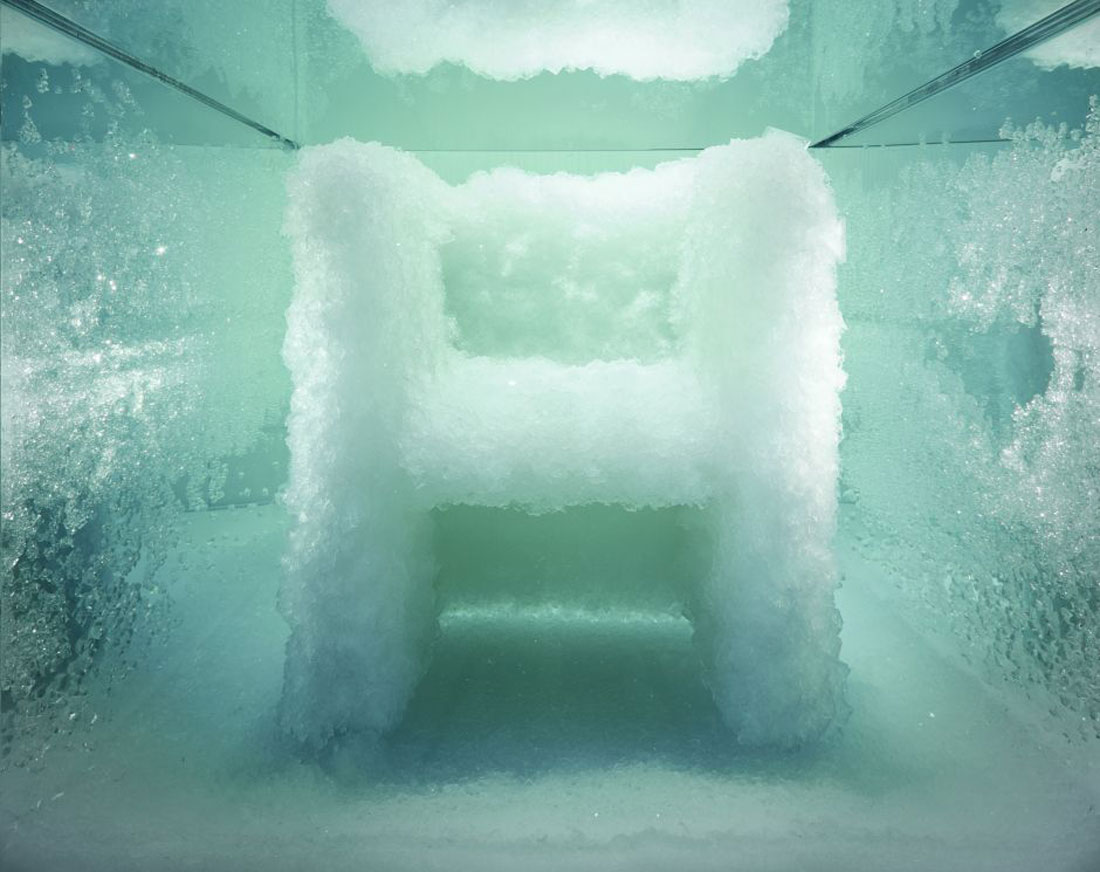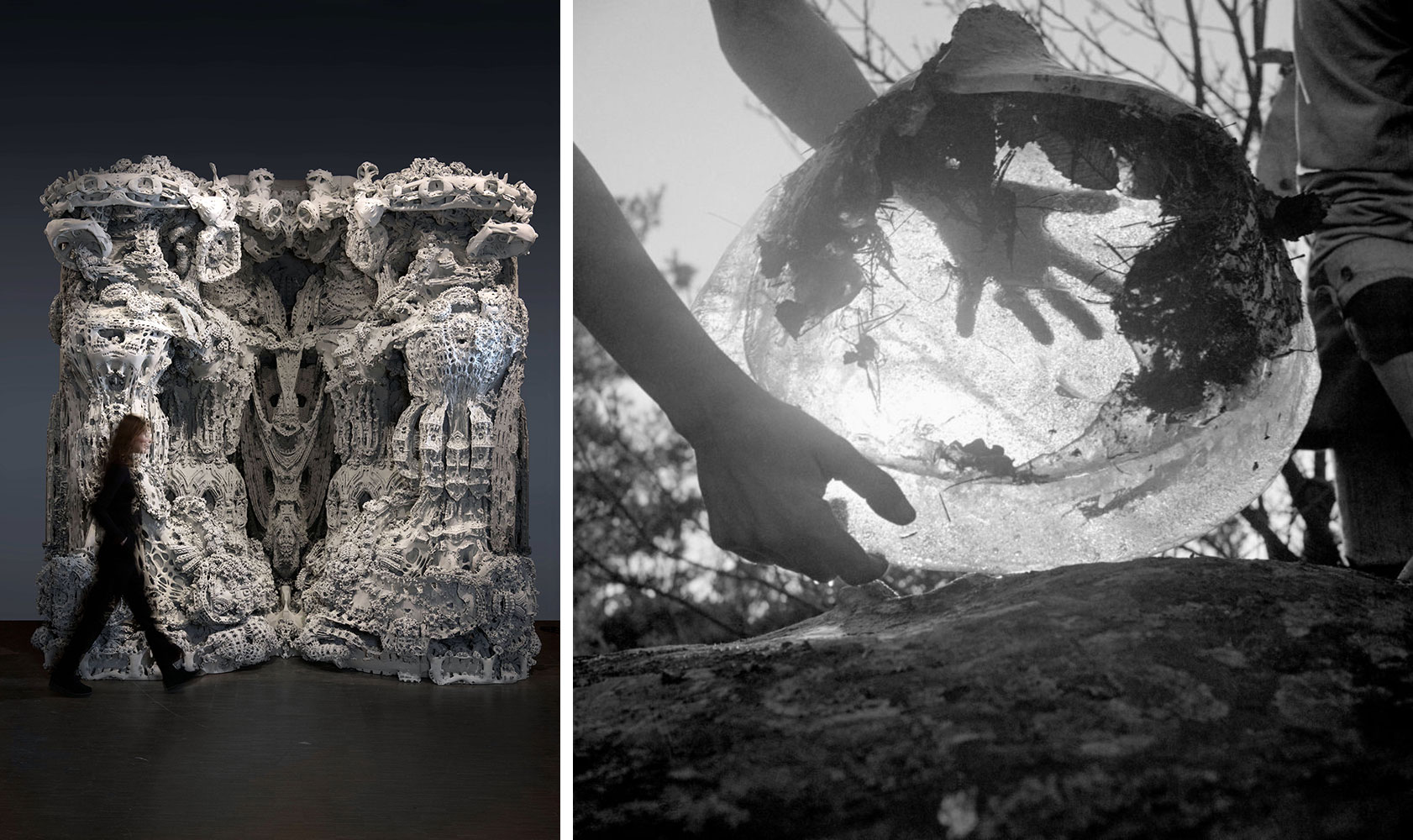DESIGN: Mimesis A living Design
 The group show, “Mimesis. A living Design” brings together 400 works by 90 creators on the subject of the evolution of nature in design. From modern biomorphism to biomimicry, from biofabrication to the recreation of living things through digital design, this exploration is as much historical as it is forward-looking. From the iconic objects of modernism and their reinterpretation of nature to the most recent design exploring a new digital “naturalness” the exhibition explores a profound shift in the very concept of nature, in terms of its links with technical and technological production, through the most innovative research in the field of design today.
The group show, “Mimesis. A living Design” brings together 400 works by 90 creators on the subject of the evolution of nature in design. From modern biomorphism to biomimicry, from biofabrication to the recreation of living things through digital design, this exploration is as much historical as it is forward-looking. From the iconic objects of modernism and their reinterpretation of nature to the most recent design exploring a new digital “naturalness” the exhibition explores a profound shift in the very concept of nature, in terms of its links with technical and technological production, through the most innovative research in the field of design today.
By Efi Michalarou
Photo: Centre Pompidou-Metz Archive
The exhibition “Mimesis. A living Design” brings together the great designers of modernity to show how this new modern language draws its organic forms from nature and science, in France, the United States, Scandinavia and Japan, from Alvar Aalto to Sori Yanagi. In 1930s France, Charlotte Perriand’s photographs captured the power of the material that inspired her design objects. In the United States, Charles and Ray Eames reinvented design with their organic shapes in the post-war period. At the same time, in France, Serge Mouille, whose exceptional pieces in the Centre Pompidou’s collections are being exhibited for the first time, was developing a biomimetic approach to lighting design. In the 1960s, pop art drew its hedonism from nature: from Verner Panton to Pierre Paulin, designers recreated an artificial nature through their creations, and filled their environment with installations resembling landscapes, marking a change of outlook. In the mid-1980s, Andrea Branzi inaugurated a new form of “neo-primitivism” by directly incorporating natural elements, such as tree branches, into his work (Animali domestici, 1985). Nature itself, not just its representation, is now an integral part of the design object. Between nature and artifice are the “Rêveries urbaines” (2016) by Ronan and Erwan Bouroullec, which recreate an atmospheric “wonderland” and re-enchant the urban space. Today, in the digital era, nature has made way for the notion of the living world, which presents itself in a new form of artificiality, between inert and animate, organic and machinic. Design is making use of “biofabrication”: biomaterials, made from biological organisms, now allow the creation of new sustainable and biodegradable objects. The chronological and thematic trail follows the evolution of a fascination with nature, its forms and its creative processes that transcends genres and eras. The first room of the exhibition immerses the visitor in the dynamic processes of nature and the morphogenesis of forms, making use of digital tools. A cross between a Renaissance grotto and a Baroque chapel, “Grotto II” (2016) by Michael Hansmeyer is an architecture inspired by nature and a digital construction, where vegetal ornamentation is based on algorithmic calculations. Continuing on from this room, a cabinet of curiosities provides a space for modern and digital to coexist, making visible this world of connections between all artistic disciplines: film, photo, sculpture, design. The next room shows the avant-gardes’ interest in natural shapes and the observation of the living world since the end of the 19th century, put into perspective by designers’ innovative practices. From the great modern designers (Alvar Aalto, Charlotte Perriand, Sori Yanagi, Charles and Ray Eames, Arne Jacobsen, Carlo Mollino) to the 1960s pop art of Pierre Paulin or Olivier Mourgue, through the biomimetic research of Serge Mouille, nature and its processes are alternately observed, imitated and celebrated. The 1980s saw the first attempts at integrating natural elements into industrial creations, notably in the work of Andrea Branzi, who pioneered a new form of “neo-primitivism”. The models that make up the “Rêveries urbaines” series (2016) by Ronan & Erwan Bouroullec are all proposals to “re-enchant” public space. Since the 2000s, with the help of digital technology, nature has been not just represented but digitally recreated, in a simulation of its own growth dynamics. Today, nature has expanded to include the notion of the “living” and the most forward-looking design makes use of “biofabrication”, incorporating micro-organisms as material and raising the question of new creative ecosystems, in a new balance between nature and human. The exhibition layout follows this historical and chronological journey. Therefore, the exhibition has two thematic focuses: one on Serge Mouille, the French modernist designer, the other on the contemporary designer duo Erwan and Ronan Bouroullec with their “Rêveries urbaines” (2016). From modern designers’ experiments with forms and materials to contemporary innovations in biofabrication and the use of digital tools, the exhibition shows the continuity of the special relationship between design and the living world.
Photo: Tokujin YOSHIOKA, Crystalized Chair _ Venus, 2008, Mineral crystals, plexiglass, steel, 179 x 110 x 110 cm, Paris, Center Pompidou, National Museum of Modern Art, © Tokujin Yoshioika
Info: Curators: Marie-Ange Brayer and Olivier Zeitoun, Centre Pompidou-Metz, 1 Parv. des Droits de l’Homme, Metz, France, Duration: 11/6/2022-6/2/2023, Days & Hours: Mon, Wed-thu 10:00-18:00, Fri-Sun 10:00-19:00, www.centrepompidou-metz.fr/





Right: Charlotte Perriand, Plate of ice held up by two hands, forest of Fontainebleau, circa 1935, Charcoal print, 86 x 86 cm, Archives Charlotte Perriand/© ADAGP, Paris, 2022


